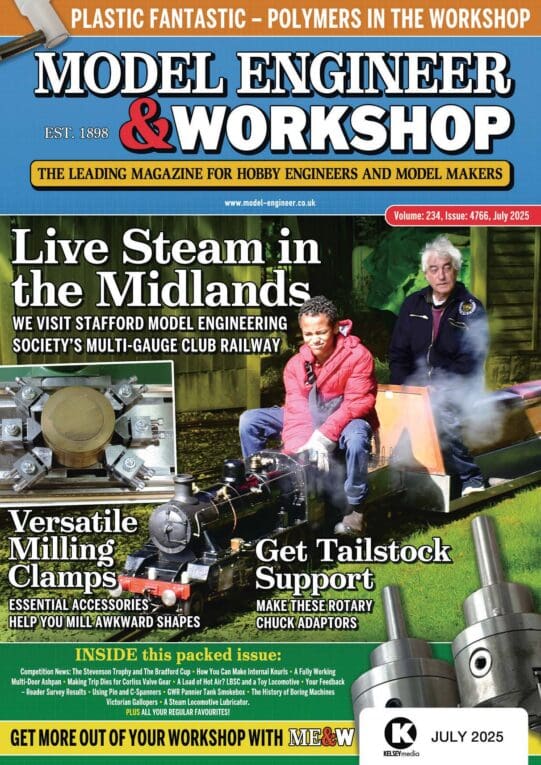Prepared the material for the next part of my Hemingway 'Worden' T&C grinder.
Yesterday I drilled, bored and reamed what is termed the "Primary Tool Holder" – a piece nearly 3 inches long of 1 in-sq. BMS with the hole right though the length. It has to end up concentric with a smaller piece with a 3/8 " hole reamed through it. Not entirely trusting accuracy in an rather old 4-jaw chuck on the Harrison lathe, though it did an excellent job of another part of the work, I drilled it on the mill.
Typically, despite all the care I took the hole is about 0.01 " off-centre!
My thought is to turn a bar to fit it closely, with a spigot for the mating component, mount both pieces on this with the bar clamped down in matched V-blocks and gently skim to 25mm square, referenced from that alignment bar.
This afternoon, I skimmed the cast-iron Guide Block, even longer with a 3/4 " reamed hole right through. The iron, continuously-cast, did not look too promising but in the event it shaped-up nicely – literally, on the Drummond manual shaper with an old brazed-shank carbide tool followed by an button-insert tool for a finish. (Temporarily as it will have to be machined down to the finished size – this was just to remove the skin and give flat mounting-faces.)
'
Also attended to the GMT boring & facing head. I'd tried using it in the end face of the Tool Holder but with little success.
It is labelled "GMT, "Made in France for Gamet".
Having no information on using let alone servicing it, I cautiously discovered how to remove the cross-slide and that revealed possibly how the R8 taper is fitted (screwed in, I think) hence possibly how to reach the feed-cam mechanism. I did not disturb them.
However, it also revealed the ratchet-wheel and sprung pawl that notches the feed-screw round. Or is meant to. The screw would turn but spring back to its original position.
I have hardly used the thing, and its works, even the beautifully-made little oil-ways, were all dry. I cleaned, lubricated, re-assembled it, and tightened the central gib-screw a touch. Testing by hand suggests that bit of TLC was all it wanted. The action seems to rely on freeness of the pawl plus slight tightness in the slide, to stop the pawl having advanced the feed then dragging it back, on each rotation.
I am still puzzled by a discreet "control". It does not seem to do anything, but is set into the knurled cap ring whose capturing sets the feed working as the main part of the head revolves below it.
Nigel Graham 2.







